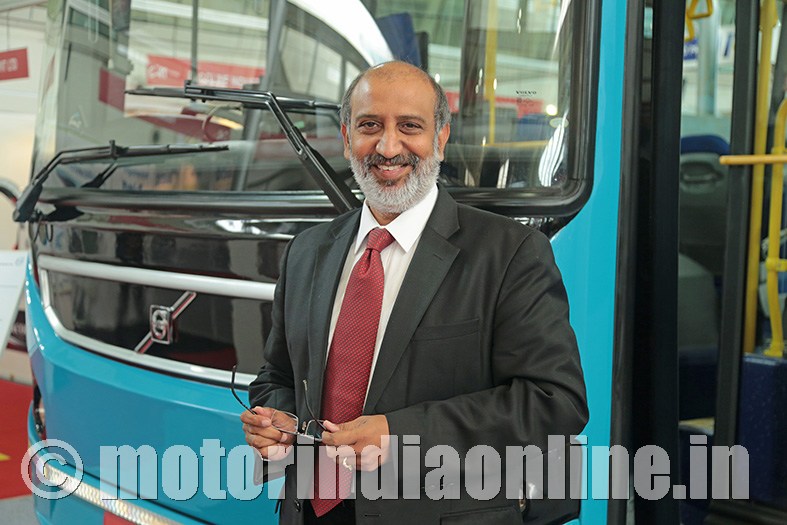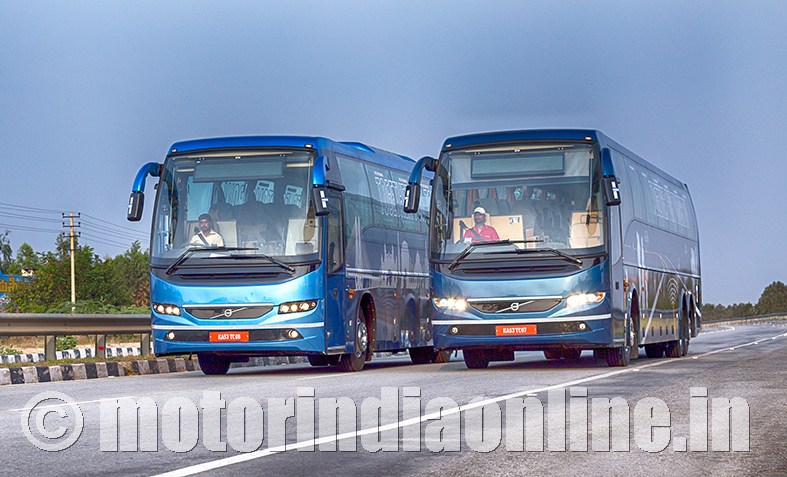“India is coming very close to other developed countries in travel safety. Today, Volvo Buses follows in India the same core safety guidelines applicable to developed countries. We have already introduced advanced features like Alcolock and tyre pressure monitoring system in this market. At the same time, we do feel that mass adoption of such safety features and technologies in India is still some time away. Regulatory push is important to accelerate the introduction of higher end safety features,” opines Mr. VRV Sriprasad, MD, Volvo Buses – South Asia, sharing his erudite viewpoints on the above topic.

Excerpts:
Mandatory and other safety requirements
Safety is a core value for the Volvo Group. It has been evolved as a tradition and guiding principle in the development of products. We follow a holistic approach to safety built around three corner stones:
Active Safety: Support driver to operate safely and avoid accidents, ensure safe driving in terms of stability, handling and braking, driver environment and driver training. Examples are electronic braking and stability control systems.
Passive Safety: The objective is to minimise injuries in the unfortunate event of an accident by focussing on a safe structure that protects against collisions and roll-over. Important elements of passive safety include restraint systems and crash worthiness, collapsible steering wheel, etc.
Personal Security – preparing bus occupants for exigencies and emergency handling to minimise incidence and impact
When it comes to safety for passengers on-board a bus ‘Roll over protection’ is one of the important safety features, which has been a standard feature on Volvo buses since a decade now. At Volvo we strive to strive to go beyond regulatory requirements and by a good margin
Apart from passenger safety and survival space, we have given importance to driver protection with ‘Frontal Impact protection’ which is a standard feature on Volvo Intercity coaches since the last five years. Additionally Frontal Under-run Protection provides protection for oncoming vehicles.
All Volvo buses are provided with a safety information package which includes a video which has to be played before the start of any trip. The video contains all safety information that passengers need to be aware of in case of an emergency.
Volvo Buses already meets and implements Bus Body Code requirements for all products.
Fire hazards safety features
Volvo Buses has been at the forefront of securing fire safety across all processes including design and development, manufacturing process and choice of materials. These are a few examples:
Minimising heat in the engine compartment and passenger area
Reducing brake heat
Ensuring appropriate ratings of electrical cables and rapid fuses.
Using fire-safe materials in the salon,
Using appropriate manufacturing tolerances.
It is important to detect fire as early as possible and alert the driver immediately. Temperature sensors positioned in the buses provide early warning of a potential fire. Buses are equipped with fire detection and suppression systems in the engine room. As an option, customers can choose to install fire detection and suppression systems in the luggage compartment as well.
All materials used in the buses are carefully chosen, tested and verified for flammability.
During an emergency situation, it is important to evacuate passengers as quickly as possible. All Volvo buses are equipped with an emergency door on the right hand side. And all side windows are breakable with a hammer. On account of these features we have been able to verify that passengers of a 53-seater bus may be evacuated within a minute.
Technology impact on safety in the times ahead
India is coming very close to other developed countries in travel safety. Today, Volvo Buses follows in India the same core safety guidelines applicable to developed countries. We have already introduced advanced features like Alcolock and tyre pressure monitoring system in this market.
At the same time, we do feel that mass adoption of such safety features and technologies in India is still some time away. Regulatory push is important to accelerate the introduction of higher end safety features.
Light-weighting necessity and trend
Adoption of new technologies and design elements is vital for continued focus on vehicle performance especially in the areas of fuel consumption, safety and emissions. Light weighting, without compromise on structural strength and durability is quite fundamental to this approach,
We look for alternate material options to achieve light weighting.
Manufacturing technologies like Resin Transfer Moulding (RTM) support fibre glass components which are lighter than conventional hand-produced parts.
We feel that steel would still be the basic raw material for Indian applications. However there are opportunities for plastic and composite materials to replace sheet metal components in specific areas.
